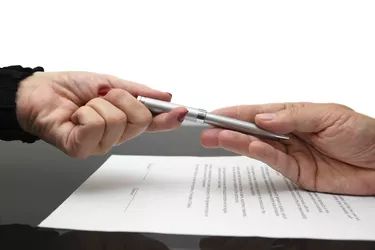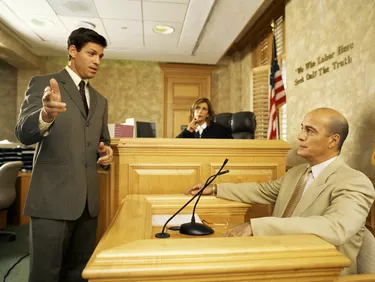
If unauthorized residents are residing on property that you own, you will generally have the right to remove them from your property through the eviction process. Be advised, there are some situations where unauthorized residents may actually have some legal rights to be on your property. Laws and procedures will vary from state to state, so review the specific laws in your area prior to initiating eviction procedures.
Step 1
Prepare a "Notice to Quit." A notice to quit is the written notice informing the resident that he needs to physically vacate the premises within the time frame specified on the notice or you will begin the eviction process. The time frame required by the notice to quit will vary on state and local law; however, notice to quit periods commonly range from three to 30 days.
Video of the Day
Step 2

Serve the the notice to quit to the unauthorized resident. If possible, you'll want to physically hand deliver the notice to the resident. If you are unable to hand deliver it, or choose not to, you will need to post the notice in a conspicuous area, such as the front door. Bring someone with you as a witness when you post the notice. If you have to take the unauthorized resident to court, the witness can confirm that a notice to quit was posted.
Step 3

File an unlawful detainer lawsuit in court if the resident does not leave once the notice to quit period has expired. The court will set a specific date and time that your case will be heard. The court will also provide a notice to the resident informing him of the court date as well.
Step 4

Present your case to the judge. If the judge finds in your favor, you will be allowed to evict the resident. Once the verdict is rendered, some states will automatically issue a court order commonly known as a writ of restitution or writ of possession, which orders law enforcement to evict the resident. If your state does not automatically issue a writ of restitution, inform the court that you received a judgment in your favor and want to order a writ of restitution.
Step 5

Confirm the eviction date with the law enforcement authority responsible for conducting evictions. On the day of the eviction, you will likely need to be present while law enforcement removes the resident, or confirms the resident has vacated the premises. Once the resident and possessions have been fully removed, you should change the locks on the property immediately.
Tip
You may want to consider consulting with an experienced real estate attorney, prior to serving eviction paperwork.
Warning
Although squatters are technically trespassing on private property, some jurisdictions require them to be evicted similar to tenants. Never forcibly remove squatters or persons occupying your vacant structure as this may be illegal and physically dangerous.
Things You'll Need
Notice to quit form
Unlawful detainer form
Video of the Day